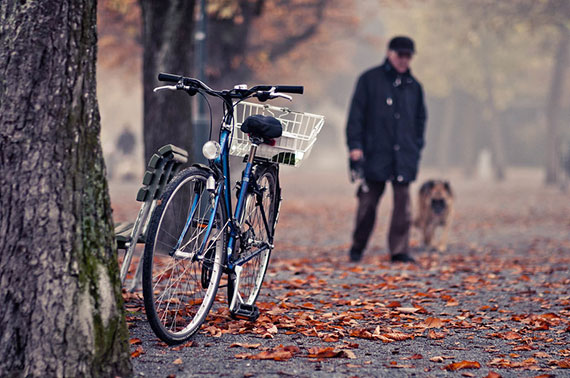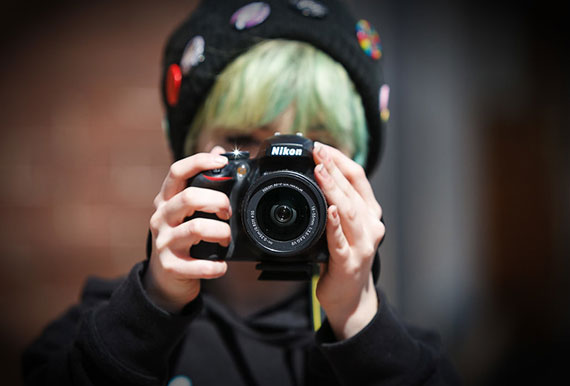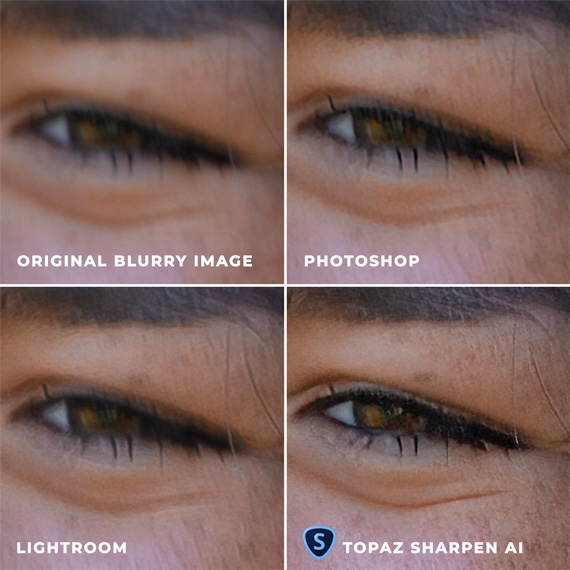Blur or lack of sharpness due to camera shake is a common problem for many photographers. It’s caused by the movement of the hand(s) holding camera itself. It can cause you to take a completely useless photo from a good opportunity.
Luckily, holding a camera correctly is not that hard. You can find many guides all over the internet showing you how you should hold your camera. Since I’m a big fan of simplicity, I will try to tackle this with just one principle that you can apply to every single situation.

Photo by Vaidotas Mišeikis; ISO 200, f/1.4, 1/2500-second exposure.
Let’s start with the worst case, what I will call the fingertip approach. You hold the camera in front of you with your fingertips. Your arm is extended, your fingers are extended, and the camera is shaking.
The basic and important thing to remember is the heavier your camera is, the less likely it is to shake.
Now, before you say, “I don’t want to carry a heavy camera!” well, neither do I. Fortunately, there are ways to make your camera “heavier” without carrying a single gram more.
How? In the fingertip approach, the “weight” of the camera is just itself, say 200 grams for a small compact digital camera. Now try to think of something to combine it with so it gets heavier.
Hmmm…
Found it yet?
For starters, your whole hand! Let’s apply the principle, one step at a time.

Photo by greg Robinson; ISO 100, f/4.0, 1/800-second exposure.
Hold the camera with the palm of your right hand, instead of just with the fingertips. Now, your arm is extended, but you have “integrated” your hand with the camera; they move together. The “weight” of the camera is now the camera plus your hand, say 0.5kg. You have about doubled the “weight,” and this will be a little steadier than the fingertip approach.
One more step. Instead of holding the camera with just your right hand, hold it with both hands. Now, you have a much more balanced platform for your camera; the “weight” of the camera is around 1kg. Be careful not to block the flash or lens with your left hand.
OK, now it’s time to minimize arm movement. Instead of having your elbows at the sides, have them rest on your chest in front of you. Now, you have essentially cut out the movement of the upper arm and fastened the camera a little better to a heavy object—yourself. If you do this, you will want to control your breathing when shooting. It’s surprising how much your lungs move up and down when breathing.
Now the motion of the camera is much more closely tied to your body, and the apparent “weight” of the camera is increased.
The next step is to cut out your motion. If you’re standing up, you will inevitability move a little bit. What you have to do is increase your apparent weight by “integrating” yourself to some heavier object. The technique that I use most often is to find a column or a wall and brace myself against it. You can sit somewhere, lie down on the ground—whatever stops your motion. You can also try to brace just your main shooting hand on a still object.
Obviously, there are different styles for different cameras. SLRs or other cameras with viewfinders, for example, are inherently less prone to camera shake, because in putting your eye to the viewfinder, you often “integrate” them with your head, which is obviously heavier than your hand(s).
For an SLR, I find it best to hold the camera normally with my right hand and place the left side of the camera in my palm so that I am holding the lens with my left hand fingers. (Thumb to the left, fingers to the right of the lens.) When shooting in portrait orientation, I keep the same grip and always tilt the camera to the left (counter clockwise). I find that my right hand is always steadier when tilting to the left. This is what works best for me; you can probably use this as a good starting point to find out exactly how you feel comfortable.
For any camera, and any hand holding situation, just remember the basic principle: make your camera heavier.
About the Author:
Can San writes for notesonphotography.
For Further Help Achieving Crisp, Sharp Photos:
Currently on sale to celebrate a recent update, Topaz Sharpen A.I. takes some of the tedious work out of post-processing. With the new auto-detect feature in the Masking tool, Sharpen AI will automatically detect the subjects in your image for sharpening. It can detect 20 different types of subjects including people, cars, planes, various animals, and more.
It is currently 25% off which ends soon, plus our readers can save even more by using the coupon code picturecorrect at checkout.
See how it works here: Topaz Sharpen A.I. at 25% Off
Go to full article: How to Hold a Camera for Sharp Photos
What are your thoughts on this article? Join the discussion on Facebook
PictureCorrect subscribers can also learn more today with our #1 bestseller: The Photography Tutorial eBook
The post How to Hold a Camera for Sharp Photos appeared first on PictureCorrect.
from PictureCorrect https://ift.tt/2UcCbpD
via IFTTT







0 kommenttia:
Lähetä kommentti